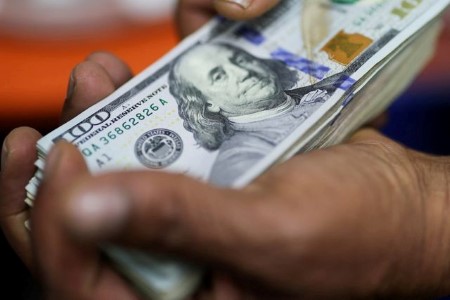




Philippines Trade Update: Exports momentum continues
 DOWNLOAD
DOWNLOAD

Quarterly Economic Growth Release: More BSP cuts to come
 DOWNLOAD
DOWNLOAD

Monthly Economic Update: Fed catches up
 DOWNLOAD
DOWNLOAD


Yields decline on growth fears, stock market drop

NEW YORK – US Treasury yields fell on Monday with those on interest-rate-sensitive 2-year notes on track for their largest daily drop since September after US President Donald Trump declined to rule out a recession as a result of his tariff policies.
In an interview, Trump declined to predict whether the US could face a recession amid stock market concerns about his tariff actions on Mexico, Canada, and China, saying that “there is a period of transition.”
US Treasury Secretary Scott Bessent said on Friday that the US economy may slow as it moves away from public spending toward more private spending, calling it a “detox period” needed to reach a more sustainable equilibrium.
“If the occupant in the White House is himself not terribly optimistic about short-term growth expectations, why should the market be optimistic about it?” said Will Compernolle, macro strategist at FHN Financial.
“If they are willing to look through what they see as short-term pain, the detox, then there’s an even bigger risk that, after the detox, they don’t really have the capability to stop a downturn before it’s too late.”
Tumbling stocks also boosted demand for safe-haven US government debt.
The yield on benchmark US 10-year notes was last down 10.5 basis points on the day at 4.213%, the largest daily drop since February 13.
The 2-year note yield fell 7.8 basis points to 4.539%, the biggest decline since September 4.
The spread between 2-year and 10-year Treasury yields steepened by around 2 basis points to 32 basis points.
A disorderly implementation of Trump’s trade tariffs has increased uncertainty over when and how long levies may be in place, which has added to fears over how they may impact growth and inflation.
Trump on Thursday suspended tariffs of 25% he had imposed last week on most goods from Canada and Mexico. The exemptions for the two largest US trading partners expire on April 2.
Concerns over federal government cost-cutting and layoffs have also raised concerns that the measures will further hurt consumer confidence and dent growth.
“The magnitude remains to be seen, but in the short run, lower government spending means less spending in the economy,” Morgan Stanley economists led by Seth Carpenter said in a report on Monday. “Fewer jobs lead to less labor income. Suspension or elimination of payments by the government means less income for those recipients. We now see a fiscal drag this year.”
Federal Reserve Chair Jerome Powell said on Friday that the US central bank is in no rush to resume interest rate cuts, with inflation still “somewhat above” the Fed’s 2% target.
But traders are betting that the Fed could deliver the first of a set of rapid-fire reductions in borrowing costs in June if an economic downturn occurs.
February’s jobs report gave a mixed picture of the US labor market. US job growth picked up, though the share of workers holding multiple jobs was the highest since the Great Recession.
This week’s main economic focus will be consumer price inflation data for February, due on Wednesday, which follows a much hotter than expected report in January. Producer price data is scheduled for Thursday.
A report from the Federal Reserve Bank of New York on Monday showed that Americans grew more worried about the economic outlook in February even as their expectations of the future path of inflation were little changed.
The Treasury will sell USD 119 billion in coupon-bearing debt this week, including USD 58 billion in three-year notes on Tuesday, USD 39 billion in 10-year notes on Wednesday, and USD 22 billion in 30-year bonds on Thursday.
(Reporting by Karen Brettell in New York; Editing by Kevin Liffey, Kirsten Donovan, and Matthew Lewis)
This article originally appeared on reuters.com





 By Reuters
By Reuters